
Hear UR is a student-centered digital project based in the Department of History at the University of Rochester. Continue reading “Hear UR”

MELIORA DIGITAL & INTERDISCIPLINARY PROGRAM
University of Rochester

Hear UR is a student-centered digital project based in the Department of History at the University of Rochester. Continue reading “Hear UR”
As part of my duties as an Andrew W. Mellon Fellow in the Digital Humanities, I am required to serve as a Research Assistant for one of the many digital humanities projects at the University of Rochester.
Continue reading “Collections, Provenance, and TEI with the William Blake Archive”
Over the course of the semester the students of Professor Thomas Fleischman’s Earth, Wind, Water, Fire: An Environmental History of Everywhere class have challenged the “traditional” homework assignment. Continue reading “Digital Storytelling for the 21st Century”
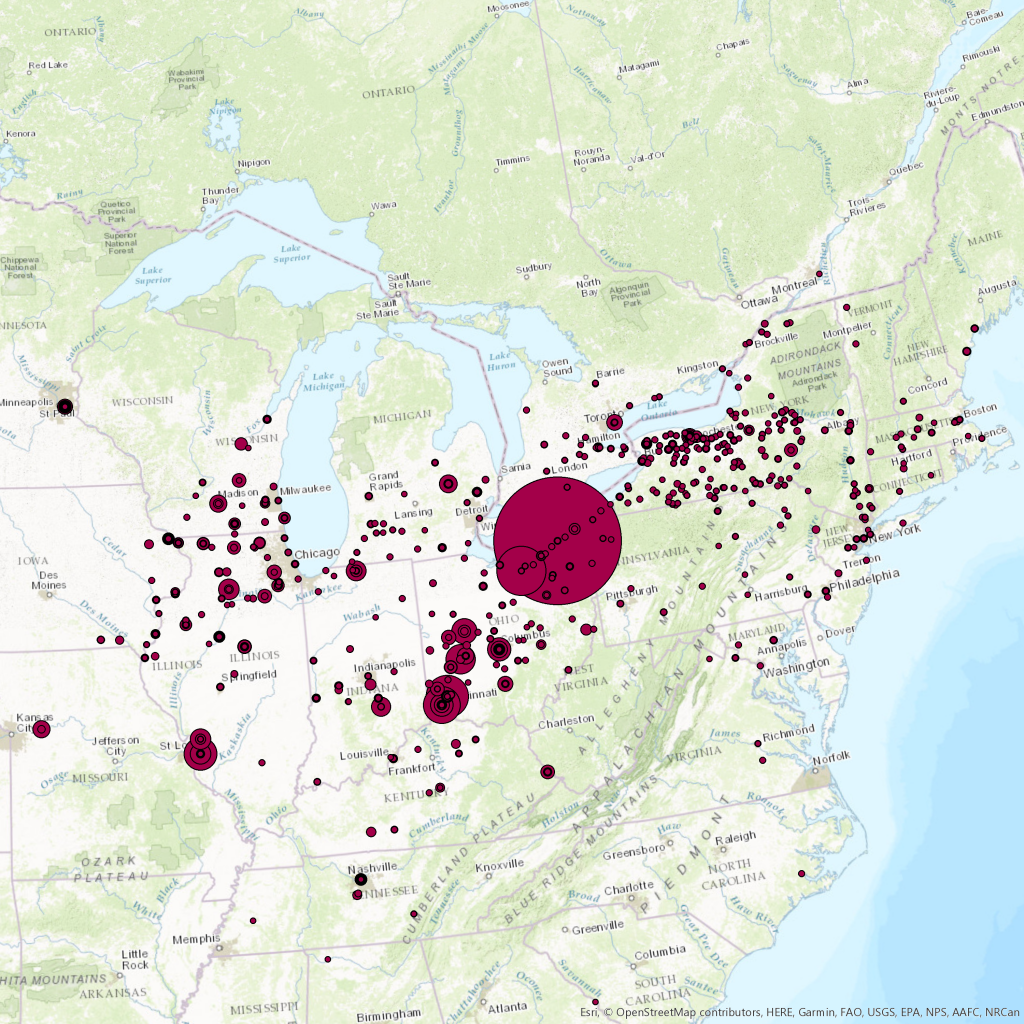
The Ornament of Empire is a history-based digital humanities project that explores the economic and ecological significance of plant nurserymen during the nineteenth century. Nurserymen, in the age of empire, carried tremendous weight. Their business enabled Americans to settle and replicate systems of agricultural systems across North America. A study of plant nurserymen is a study of the development of American capitalism and the ecological effects of American empire. The project integrates big-data management, GIS mapping, and JS visualizations to track the economic and ecological impact of plant nurserymen in nineteenth-century America. Using nineteenth-century nursery catalogues, business ledgers, and correspondence between nurserymen, The Ornament of Empire maps networks of trade as well as the physical movement of plants across the continent.
PI: Camden Burd, Department of History, Andrew W. Mellon Fellow (2016-2018)
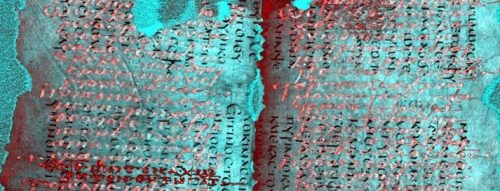
The University of Rochester will host a featured speaker, Michael Phelps, in the Humanities Center Conference Room D on Thursday, March 22, at 5 p.m. Phelps directs a multi-spectral imaging project at St. Catherine’s Monastery in the Sinai Peninsula, Egypt. Continue reading “Michael Phelps Lecture”

Education: BA, History, University of Utah, 2011; MA, History, Central Michigan University, 2014; MA, History, University of Rochester, 2015.
Biography: Camden Burd is a fourth-year Ph.D. candidate in the Department of History. His research explores the environmental transformation of the American landscape over the course of the nineteenth century. Continue reading “Camden Burd”
![]() Education: BA, Philosophy, University of Maryland, 2009; Certificate, LGBT Studies, University of Maryland, 2009
Education: BA, Philosophy, University of Maryland, 2009; Certificate, LGBT Studies, University of Maryland, 2009
Bio: Eitan Freedenberg is a fourth-year PhD student in the Graduate Program in Visual and Cultural Studies and a 2014 – 2016 Andrew W. Mellon Fellow in Digital Humanities.
Education: BA, English, Oxford University; MA, Medieval Literature, University of York.
Bio: Currently in her 5th year of an English PhD, and beginning to write the dissertation. Continue reading “Alison Harper”
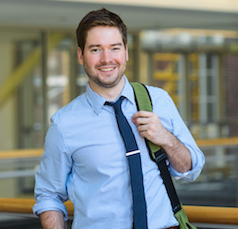 Education: MA, Creighton University, 2012. BA, University of Nevada, Las Vegas, 2010
Education: MA, Creighton University, 2012. BA, University of Nevada, Las Vegas, 2010
Biography: Eric C. Loy is a third-year PhD student in the Department of English and a 2014-2016 Andrew W. Mellon Fellow in Digital Humanities.
 Education: BA in Biblical Studies, Grace College; MPhil in Philosophical Theology, University of Oxford; MA in Philosophy, Western Michigan University.
Education: BA in Biblical Studies, Grace College; MPhil in Philosophical Theology, University of Oxford; MA in Philosophy, Western Michigan University.
Nathanael Smith is a Philosophy PhD student in his fourth year. He is a Slattery Fellow and an Andrew W. Mellon Fellow in the Digital Humanities at the University of Rochester. Continue reading “Nathanael Smith”
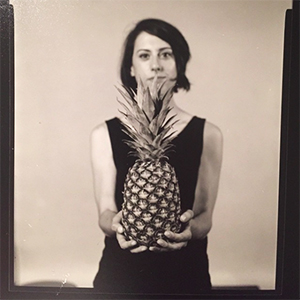 PhD Student, Visual and Cultural Studies
PhD Student, Visual and Cultural Studies
tracy.stuber@rochester.edu
Education: BA, Binghamton University, Art History and German Studies, 2011
Biography: Tracy Stuber is a fifth-year Ph.D student in the Visual and Cultural Studies program and an Andrew W. Mellon Fellow in Digital Humanities.
Education: BS, Environmental Management & Technology, Rochester Institute of Technology, Rochester, NY, 2010; BA, History & English, Creative Writing, Binghamton University, Binghamton, NY, 2006, Graduate Certificate in Women & Gender Studies, Susan B. Anthony Institute for Women & Gender, University of Rochester, 2014
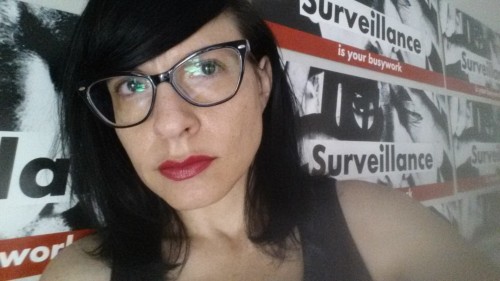
Education: BA, Art; Art History Concentration, Georgia State University, 2011
Bio: Alana Wolf-Johnson is a fourth-year PhD student of Visual and Cultural Studies at the University of Rochester.
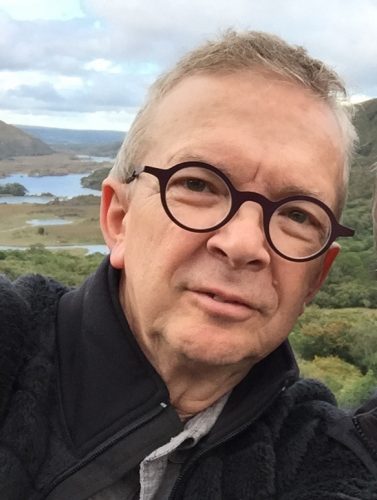
Morris Eaves is Program Director for the Mellon Graduate Program in Digital Humanities. He is also Professor of English and Richard L. Turner Professor of Humanities.
For more information, please visit his faculty page hosted by the Dept. of English.

After completing her PhD in the Department of English at the University of Rochester, Szabo took a position as an Instructional Multimedia Specialist at Grinnell College. Shortly thereafter, she was offered a position at Stanford University where she worked in Academic Technology in the Stanford University Libraries. While at Stanford University she helped to develop numerous digital projects for both teaching and research. Her diverse skill sets and experiences helped prepare for her current position as an Associate Research Professor in the Department of Art, Art History, and Visual Studies at Duke University. Szabo wears many hats at Duke University where she is connected with the Information Sciences, Computational Media, Wired! Lab, the Franklin Humanities Center, and Bass Connections. The wide range of responsibilities and positions helped to inform her discussion with digitally minded graduate students about the academic job market.
Szabo stressed the importance of flexibility for graduate students as they approach the job market. As traditional tenure-track jobs continue to dwindle, she argued, the digital humanist should recognize the fluidity of their skills. Digital humanists are valued assets to libraries and other departments where a skillset is more desirable than the departmental affiliation associated with a Ph.D. As a result graduate students involved in the digital humanities should build a portfolio of work to demonstrate skills learned as well as their application. With a field as young and broad as the Digital Humanities, Szabo urged graduate students to be proficient with one, or two, digital tools. By building a (manageable) digital project or incorporating a tool into one’s traditional dissertation, graduate students can better prove their competencies in DH.
Digital humanists might never be considered a “traditional” faculty members. Szabo demonstrated that this reality is not necessarily a bad thing. She pointed out that she has had the opportunity to travel abroad for research, work on numerous digital projects, and collaborate across disciplines. Her publications and projects demonstrate a productive and rewarding career path. Szabo’s skills are valued and her perspectives are unique. The inherent flexibility of DH, she argued, is increasingly sought out in an age where boundaries between disciplines are beginning to break down. As departments begin to incorporate digital literacies into their curriculum, digital humanists will be a valuable source of knowledge for those disciplines now facing the realities of 21st century technologies. Ultimately, she argued, the changing landscape of academia requires graduates students to be flexible, optimistic, and creative—essential traits of the digital humanist.
Camden Burd is a PhD candidate in the Department of History at the University of Rochester. He is a 2016-2018 Andrew W. Mellon Fellow in the Digital Humanities.
Photogrammetry is a process in which several images of an object, building, or landscape are digitally stitched together to create a three-dimensional representation. By collecting a series of images from different depths and angles historians can recreate historic structures and landscapes as tools for historical interpretation, argumentation, as well as a device for learning. While the capabilities of photogrammetry are wide-ranging, historians most commonly use photogrammetry as a tool for the collection and preservation of cultural heritage. The ability to capture building designs, historic structures, and other objects provides historians with the tools to revisit and interpret historical spaces well after technological advances or natural processes change the shape of objects and landscapes.
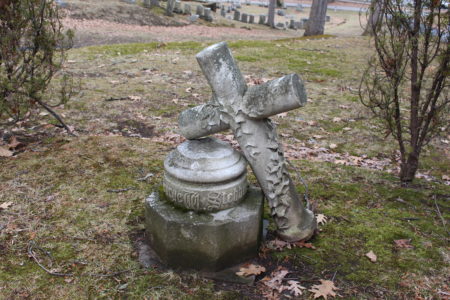
Walking through the historic Mt. Hope Cemetery in Rochester, New York I stumbled upon the grave of George W. Stebbins. After taking a series of pictures from different vantages, I compiled to files into Agisoft PhotoScan. One of many programs programed to reconstruct photographs into three-dimensional objects, Agisoft Photoscan identifies similar features in each photograph and compiles them object according to shared features. By creating a mesh of the compiled images, I then constructed an object that can be twisted, turned, and examined more dynamically than a traditional photograph.
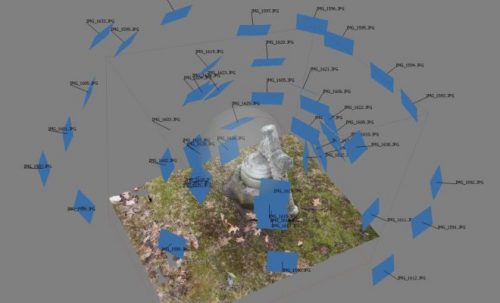
The construction of the three-dimensional grave provides a digitally accessible object that otherwise may be inaccessible because of geography and funds. Collecting a series of objects serves as both a means of cultural resource management and a vehicle in which to compile historic evidence in new and compelling ways. For example, the Virtual St. George’s Project housed at the University of Rochester uses historic inventories, architectural drawings, and archaeological findings to reconstruct eighteenth-century St. George’s Bermuda. Students and project participants are building a rich database of historic information while also creating a game-like interface to demonstrate the significance of Bermuda in the eighteenth-century Atlantic World. Using photogrammetry and other three-dimensional rendering technologies historians can save, restore, and share historical information in dynamic and interactive ways.
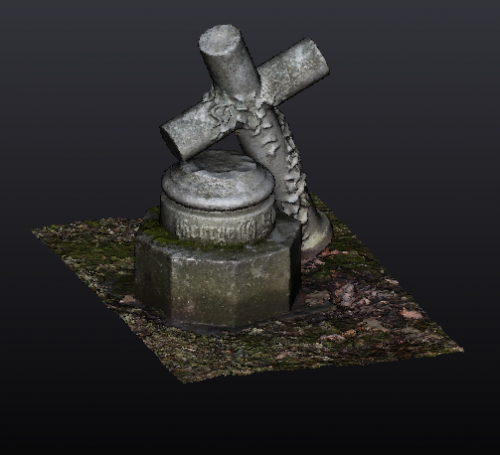
Camden Burd is a PhD candidate in the Department of History at the University of Rochester. He is a 2016-2018 Andrew W. Mellon Fellow in the Digital Humanities.
This post was originally published on his personal website with interactive 3D viewer. See more here…
How Digital Annotations Challenge Historians’ Assumptions
Continue reading “Research Report: The Family We Thought We Knew”